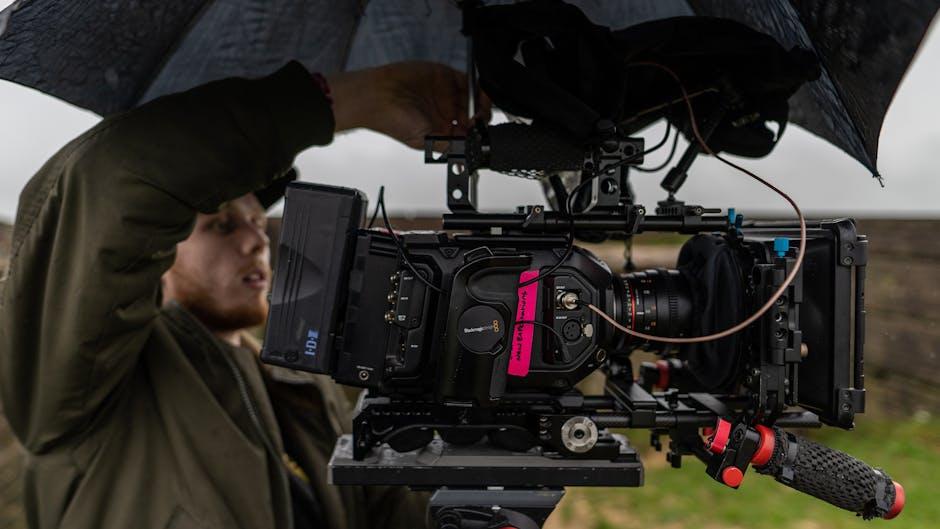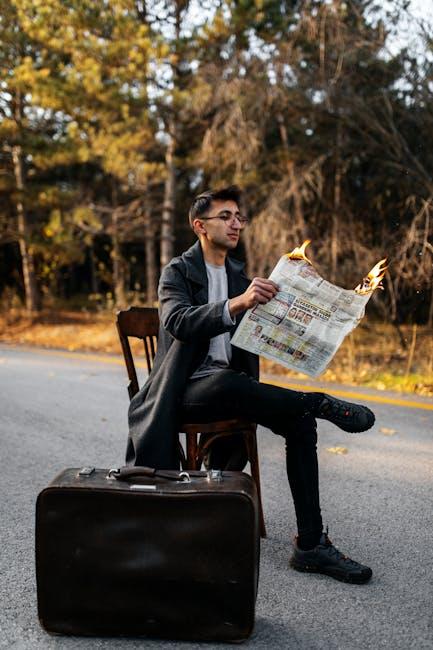In the world of filmmaking, where every frame is meticulously planned and every scene carefully orchestrated, the unpredictability of weather can be both a formidable adversary and an unexpected muse. As directors and crews set out to capture their vision, the sky’s whims can transform a sunlit shoot into a rain-soaked challenge or a gentle breeze into a gusty dilemma. Yet, it is in these unplanned moments that creativity often finds its truest expression. This article delves into the ingenious strategies and adaptive techniques filmmakers employ to navigate the capricious nature of weather, turning potential setbacks into cinematic triumphs. Join us as we explore the delicate dance between art and atmosphere, where resilience and resourcefulness reign supreme.
Weathering the Storm: Creative Solutions for Filmmakers
Filmmakers often face the unpredictable whims of nature, but with creativity and quick thinking, they turn potential setbacks into cinematic opportunities. When rain clouds threaten a sunny shoot, directors might pivot to capture dramatic scenes that embrace the stormy weather, using natural elements to enhance the film’s mood. Windy conditions can be creatively harnessed to add a dynamic energy to scenes, with billowing clothes and swaying trees providing an organic backdrop that studio effects can’t replicate.
- Portable Shelters: Quick setups of tents or tarps can protect equipment and crew, ensuring continuity in shooting.
- Flexible Scripting: Adapting scenes on the fly to incorporate unexpected weather can lead to unique storytelling opportunities.
- Lighting Adjustments: Utilizing reflectors or additional lighting can help maintain the desired aesthetic despite overcast skies.
In the face of unforeseen weather, filmmakers rely on their ability to adapt, turning challenges into a canvas for innovation and storytelling brilliance.

Adapting the Script: Flexibility in the Face of Nature
In the world of filmmaking, the weather can be as unpredictable as the plot twists in a thriller. Directors and crews must embrace the art of flexibility to navigate these unexpected changes. When a sunny forecast turns to rain, filmmakers often shift their schedules, opting to shoot interior scenes that were originally slated for later. This adaptability not only keeps production on track but also ensures that the creative vision remains uncompromised.
To maintain momentum, crews employ a variety of strategies:
- Alternate Shooting Plans: Keeping a list of backup scenes ready to film indoors or under cover.
- Weather-Resilient Equipment: Utilizing waterproof gear and protective covers for cameras and sound equipment.
- On-the-Spot Script Adjustments: Tweaking dialogue or settings to suit the new atmospheric conditions.
By embracing these techniques, filmmakers turn nature’s unpredictability into an ally rather than an obstacle, showcasing the power of creativity under pressure.

Gear Up: Essential Equipment for Weather Challenges
When unpredictable weather strikes during filming, having the right gear can make all the difference. Filmmakers need to be prepared with an arsenal of equipment that not only protects their gear but also ensures the continuity of their creative vision. Here’s a look at some essential items:
- Weatherproof Camera Covers: These are vital for safeguarding cameras against rain, snow, and dust, allowing for uninterrupted shooting in any conditions.
- Portable Shelters: Pop-up tents and tarps provide quick, temporary cover for both crew and equipment, offering respite from sudden downpours or harsh sunlight.
- Lighting Modifiers: Diffusers and reflectors help adapt to changing light conditions, ensuring consistent shot quality regardless of cloud cover or unexpected sunshine.
- Waterproof Clothing: Keeping the crew dry is crucial for maintaining morale and efficiency. High-quality waterproof jackets and boots are a must-have on any set.
Equipping a set with these essentials allows filmmakers to embrace the unpredictability of nature while keeping their focus on creativity and storytelling.

On-the-Fly Adjustments: Real-Time Problem Solving Techniques
Filmmakers often face the daunting task of dealing with unpredictable weather, requiring a toolkit of quick-thinking strategies. Adaptability is key. Directors and producers frequently rely on creative solutions, such as reworking scenes to fit the current conditions. For instance, a rain-soaked day might transform a planned sunny scene into a dramatic, moody sequence that enhances the narrative.
- Location Flexibility: Shift to indoor settings or utilize cover to maintain continuity.
- Script Modifications: Tweak dialogue or action to match the weather’s mood.
- Technical Adjustments: Use equipment like rain covers for cameras or adjust lighting to counteract overcast skies.
- Post-Production Magic: Rely on digital effects to alter the appearance of the scene if needed.
These on-the-fly adjustments not only ensure the shoot continues smoothly but often lead to unexpected creative breakthroughs, turning potential setbacks into opportunities for storytelling innovation.

